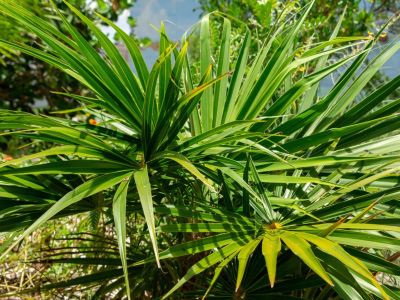Growing Florida thatch palms is not difficult in the right climate. If these trees interest you, read on for more Florida thatch palm facts and information about their cultural requirements.
Florida Thatch Palm Facts
Florida thatch palm trees are also known as silk-top thatch palms. They don’t grow in groups but are largely solitary, growing as individual specimens. They are native to the tropical areas of Florida as well as the Caribbean. However, they are currently on the endangered list. These palms grow only one trunk. The leaves are palmate, with green tops and yellow green coloration on the underside of the blades. The leaf tips droop noticeably. Look for leaf sheaths that split at the base, and small, white fruit on stalks.
Growing Florida Thatch Palms
Don’t plan on growing Florida thatch palms unless you live in a toasty region. They thrive in only the warmest regions like U.S. Department of Agriculture plant hardiness zones 10 and 11. Trees can get to 30 feet (10 m.) tall but often stay shorter in cultivation. The fan-shaped leaves can get to 3 feet (1 m.) wide. In the wild, they grow by the coast on hummocks and berms. But they are also cultivated as garden trees or planted along streets or in median strips. Urban pollution does not seem to affect their growth, and they are very tolerant to salt.
Florida Thatch Palm Care
Assuming you live in an appropriate area for growing Florida thatch palms, you’ll find that they need only minimal attention once mature. The palms prefer a full sun area and need at least several hours of direct sun a day. The more shade, the slower they grow. These palms also prefer calcareous soil that is moist during the summers and drier in winter. Once established, this palm can hold on well during tropical storm winds and is very drought tolerant. Note that while it tolerates seaside spray, it does not thrive when soaked in brackish water.
